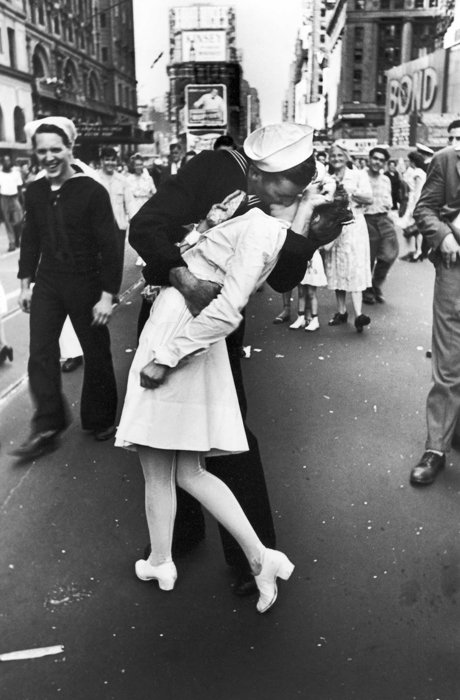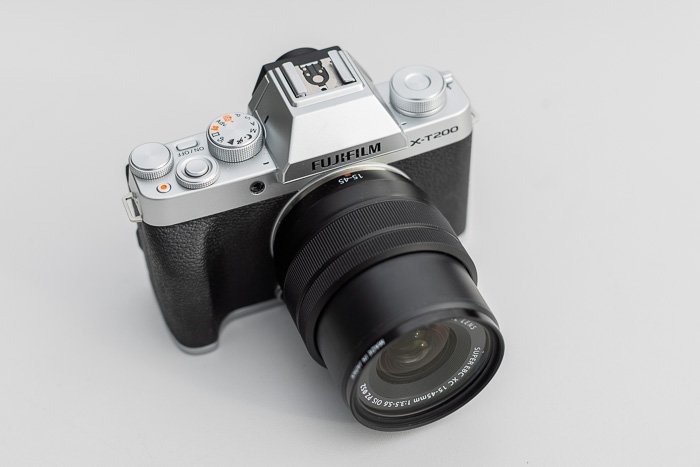An iconic image is much more than a snapshot of one moment.
These iconic photos show a fraction of a second in our world’s history. They portray relationships, situations, and the passing of time.
Read on for the stories behind the most iconic and breathtaking pictures ever taken.
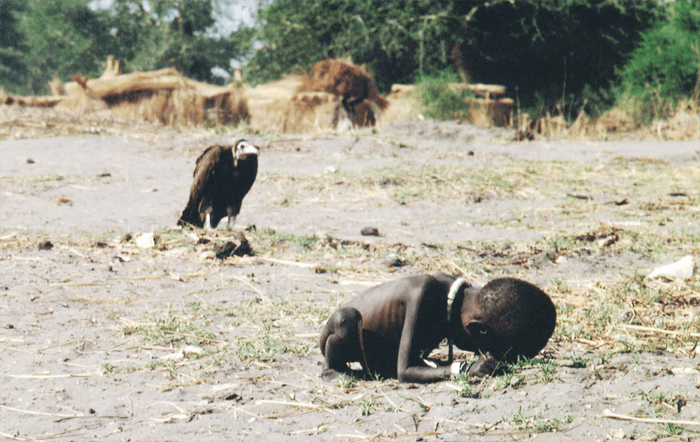
1. Lennon & Yoko – Annie Leibovitz (1980)
The image of John Lennon and Yoko Ono is no ordinary portrait photography session. John and Yoko were a married couple, with a strong adoration for each other.
Annie Leibovitz captured the famous photo. At the time, she was Rolling Stone’s chief photographer, and she took this photo with an instant camera.
She initially wanted John alone, but he insisted that Yoko joined him on the upcoming cover.
Annie was inspired by the Two Virgins album cover. It was iconic but banned because John and Yoko were showcased naked. But this time, Yoko was hesitant in taking her clothes off, so she remained fully clothed. It was John who undressed and curled up beside Yoko without direction.
All three knew it was a profound image. Yet none of them knew it was to be his last image. John was assassinated in front of his apartment a few hours later.
The image may have stayed strong in our minds on its own. But due to its importance, it’s become unforgettable.
Since then, Annie Leibovitz has become one of the world’s most famous portrait photographers. She still captures contemporary photography, and her portraits of celebrities are all over magazines.
![]()
2. Pillars of Creation – NASA (1995)
We know more about the stars above our head than we do about the oceans below our feet. Astrophotography has come a long way.
This picture wouldn’t become a legend today. But 23 years ago? This was the first image captured by the Hubble Telescope, and it was impressive.
As was the journey of the Hubble before it captured it. The space shuttle Atlantis brought the telescope into space, over-budget and many years late. It finally got there in 1990.
In orbit, a manufacturing flaw allowed its 8-foot mirror to distort. This made any image capture impossible. It was fixed only three years later.
After two more years, the Hubble reached the perfect location. This allowed the perfect capture. It blew everyone’s minds. For the first time, the universe was up-close and personal. The image was so crisp, clear and deep, it allowed many more images to come over the following decades.
What we see in this famous photo is the Eagle Nebula, 6,500 light-years from Earth. These are smokestacks of interstellar dust found in the Serpens Cauda constellation.
The image itself is a composite. The Hubble telescope used four cameras to capture this beautiful scene. The missing parts in the top right are due to one of the lens magnifications.
As one of the most iconic images ever photographed, it reaffirmed our passions for photographing the night skies.
If you’re fascinated by the stars in our night-sky, you’ll love our Milky Way Mastery course!
![]()
3. D-Day – Robert Capa (1944)
This is one of my favourite photography stories. Robert Capa and the D-Day landing in 1944.
Most of the western world knows about D-Day. A force of 34,250 Allied soldiers stormed the beaches of Normandy to fight Nazi Germany in World War II.
Among them was Robert Capa, a Hungarian photographer working for LIFE magazine. He found himself capturing troops landing at Omaha beach.
The image we see is of Private First Class Huston Riley. It shows us firsthand the struggles and hardships that the soldiers experienced in this conflict.
Huston Riley became a target for artillery shells and gunfire who mowed down his comrades left and right. Struck several times, it took the 22-year-old Private 30 mins to reach the shore.
A sergeant who helped the Private remembered thinking, “What the hell is this guy doing here? I can’t believe it. Here’s a cameraman on the shore.”
Capa spent 90 mins capturing scene after scene, under fire, while soldiers died around him.
A courier took four rolls of film to the LIFE offices in London. The magazine’s general manager stopped the presses to get the images out immediately.
Only a few frames survived. The grainy images showed no post-processing.
The feel and the texture, not to mention the blurriness, depicted a feeling of frantic action.
Realism, without the use of staged direction, is what makes these images iconic and very famous.
![]()
4. The Tetons and the Snake River – Ansel Adams (1942)
If you’re looking for landscape photography inspiration, look no further than Ansel Adams. He is the godfather of iconic landscape photographs.
He’s famous for shooting monochrome images of National Parks throughout the American West. Among his most well-known images is the stunning view of the Teton mountain ridge and Snake river.
The most amazing thing about these images is that they are large format. The Deardorf 8×10 View Camera captured high-quality images. This is because the negatives were 8 x 10 inches large.
The remarkable thing is that the camera, tripod and film had to be hand-carried long distances.
This image of the Teton mountain ridge was taken in 1942 while Adams was working for the Department of the Interior. They commissioned him to photograph National Parks, Indian reservations, and other locations.
These were for mural-sized prints for the department’s new building. They had an understanding that he could photograph images for himself while employed.
You can learn how to take your own breathtaking landscape shots with Simply Stunning Landscapes.
![]()
5. Dalí Atomicus – Philippe Halsman (1948)
When it comes to creative photography, the image entitled Dali Atomicus pops up in many people’s mind. We all know the scene. But we may not know the story behind it.
Philippe Halsman was another photographer working for LIFE magazine at the beginning of the 20th century. Originally from Riga (which at the time was part of the Russian empire), he made his way to New York.
In 1941, Halsman met Salvador Dali, who was to become a long time collaborator. In 1948, he approached Dali with the idea for a photograph. But he knew a simple portrait wouldn’t be enough.
Inspired by Dali’s Leda Atomica, Halsman wanted to create an idea of suspension. Atomicus means ‘everything in suspension’. He created an elaborate scene to surround the artist while showing the original work.
The scene included many elements: A floating chair, a bucket of water, a jumping Dali, and a floating easel complete with painting.
Three flying cats also enter the scene in front of the Leda Atomica, which itself is jumping from a step in mid-air. With the help of assistants, family members and thin wires, this shot was possible.
The easel and the painting were suspended with wires. Halsman’s wife held the chair while Dali jumped. Assistants threw the cats and water.
Astonishingly, after each capture, Philippe ran upstairs to develop the film. He checked the image for composition and came down to try it again.
They did this 28 times until they created this famous photograph. The image was later edited to remove the wires, and Dali painted an image that they added in on the central easel.
The idea, setup and execution process took a very long time for one single image. But in the end, it was worth it.
If you would like to see the unedited version of the image, click here. If you would like to see the other 27 images, then click here.
You can also learn how to take mind-boggling images with our Creative Photography Cookbook!
![]()
6. First Digital Image – Russell Kirsch (1957)
You would think that the first digital camera (1975) took the very first digital image. But you would be wrong. It was a scanned image by Russell Kirsch in 1957.
Russell was an American former engineer at the National Bureau of Standards. He was part of a team that ran SEAC (Standards Eastern Automatic Computer). It was the first stored-program computer.
In 1957, they developed a digital image scanner to “trace variations of intensity over the surfaces of photographs”.
Way before digital or Lightroom photography was an idea in someone’s head, this image was created. It measured only 176 x 176 pixels and was an image of his three-month-old son.
The resolution is low because the computer he used couldn’t store more information. It might not be one of the world’s most famous photographs, but it is definitely iconic.
This idea and its execution paved the way for digital photography.
![]()
7. Lunch Atop a Skyscraper – Charles C. Ebbets, Thomas Kelley or William Leftwich (1932)
I know what you’re thinking – is this image real? This famous photograph is on office walls and calendars across the globe. It’s not difficult to see why, as the photography composition is amazing.
We see 11 men casually eating, chatting and smoking while dangling 840 feet above Manhattan. The only thing separating them and the thin air is one tiny beam.
These men are among the many construction workers who helped build the Rockefeller Center. The image was taken from the 69th floor of the flagship RCA Building (now GE Building).
What you might not know is that the image was staged. It was to act as a promotional campaign for the massive skyscraper complex.
No one knows the identities of the 11 men. Or who took the photograph. Three photographers, Charles C. Ebbets, Thomas Kelley and William Leftwich, were all present.
The image is iconic as it is a thumb on the nose to danger, but also to the Great Depression. You can’t think of New York without thinking of this famous photo.
To date, it is the Corbis photo agency’s most reproduced image.
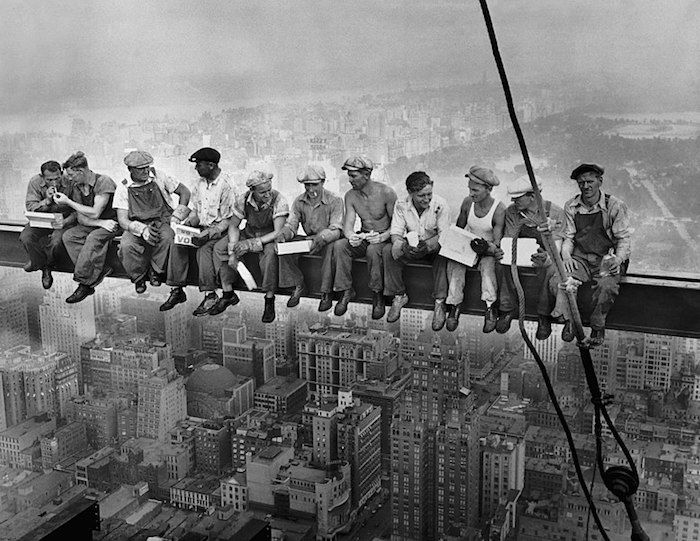
8. View From the Window at Le Gras – Joseph Nicéphore Niépce (1826)
Photography used to be a DIY hobby. A combination of ingenuity and curiosity is what created the first known photograph. In fact, the first image known to man came from an inventor, and not an artist.
Joseph Nicéphore Niépce became fascinated with the printing method of lithography. This is where images drawn on stone could be easily reproduced using oil-based ink.
His curiosity led him to the ‘camera obscura’, which captured and projected illuminated scenes. The scenes were lit by natural light, out of his studio window.
The scene, captured on a pewter plate, was treated with light-sensitive chemicals. After many hours, a crude copy of the buildings and rooftops is what remained. The image was permanent.
It was Joseph Nicéphore Niépce who paved the way for photography. He later worked with Louis Daguerre, who also substantially advanced photography.
This isn’t one of the world’s most famous photographs for its content. It’s famous because it’s the first permanent photograph using any method.
It was taken almost 200 years ago.
![]()
9. V-J Day in Times Square – Alfred Eisenstaedt (1945)
There are many things I love about this image. It’s a classic example of why black and white photography is a powerful medium. It also shows time, a place, a mood and a feeling.
You don’t need to know the date or the title to figure it out. You can tell this is a scene in a major city in the USA. From the clothing, you can figure out that it’s the 40s, and from the uniforms, you can guess that it’s during wartime.
The laughter and happy faces speak of the end of the war, or thereabouts.
And the couple? She’s a nurse and he’s a sailor. He grabs and kisses her, and this appears to be a surprise to her.
Shot in Times Square, this image became one of the most iconic photos ever. It became the symbol of freedom in the collective memory.
10. How Life Begins – Lennart Nilsson (1965)
If one subject fascinates us as macro photographers, it is how life begins. This is the first image of a developing foetus. It kick-started questions and ideas surrounding birth.
The foetus is 18 weeks old and perfectly formed. Before this famous photograph, we have never seen the inside of a womb. And how a baby developed from a fertilised egg to a baby, ready to be born.
Photographed in Stockholm, the foetus was delicately placed in a manner that it appeared to float. This was to give the impression of a womb.
Lennart Nilsson is the photographer and scientist behind this image. And it is thanks to him that we have this famous image, expanding our knowledge.
![]()
11. Betty Grable – Frank Powolny (1943)
Before Marilyn Monroe, there was Betty Grable. An actress who was to star in Sweet Rosie O’Grady. Little did she know she would soon be the face and inspiration behind boudoir photography.
The photographer, Frank Powolny, was capturing Betty for publicity images when he asked for a ‘back shot’. She agreed and gave a coy ‘over-the-shoulder’ look.
This look, mixed with her famous smile and legs (famously insured for a million bucks), created an iconic image.
This image became the first pin-up photograph. It inspired American soldiers, sailors, airmen and Marines to keep up the fight against the Axis powers.
50,000 copies were requested every month during the war. She was painted on airplanes, posted on barrack walls and sat in the pockets of soldiers across the globe.
Even Hugh Hefner cited her as an inspiration for Playboy.
![]()
12. Behind the Gare Saint-Lazare – Henri Cartier-Bresson (1932)
Out of all the iconic photos on our list, this is the one that portrays the decisive moment. We have Henri Cartier-Bresson to thank for it.
Bresson was a master of street photography. You can’t search for inspiration without his name popping up.
In 1932, Bresson was behind the Gare Saint-Lazare train station in Paris, poking his Leica through a fence. He captured a man leaping across a puddle of water.
It’s a perfect moment. The man is mid-step, and seeming to copy the poster in the background. A poster promoting dancers.
Cartier-Bresson saw the moment play out in his head and snapped it with perfectly straight composition.
![]()
13. The First Photograph Upon Discovery of Machu Picchu – Hiram Bingham (1911)
Imagine traversing an unknown area, only to stumble across one of the most important geographical locations in the world. That’s what Hiram Bingham did.
What a classic and beautiful story of iconic travel photography. Hiram Bingham wasn’t even a photographer, but an American archaeologist.
He and a team of explorers were looking for Vilcabamba, the last Incan stronghold. A local farmer told him and his team there were some ruins on top of the hill.
After hiking for six days, carrying photographic and excavation equipment, they landed in Aguas Calientes. Here they found a guide that took them up the hill.
The vegetation had almost reclaimed the stone terraces and buildings. But a city had once stood in this remote and rugged precipice.
Bingham set up his tripod and camera then and there. He spent the afternoon photographing. You may not know this image. But we have all seen the famous photographs that wouldn’t be possible without Bingham.
![]()
14. Milk Drop – Harold Edgerton (1957)
Before 1950, if you wanted to take a good photograph in the dark, you needed a lot of bulky equipment. Thanks to Edgerton, that is no longer the case.
In the 50s, Harold Edgerton and his team at MIT started playing with a process that would change photography forever. Lighting in photography would be something new and refreshing.
The electrical-engineering professor combined high-tech strobe lights with camera shutter motors. This let him capture moments unseen to the naked eye.
This revolutionary image is a stop-motion photograph; a moment frozen in time. This image proved that photography used for scientific purposes could advance human understanding.
Edgerton paved the way for the modern electronic flash. After this, he went on to capture many other ‘blink-and-you’ll-miss-it’ shots.
Harold Edgerton is one of the most famous photographers. Without him, we wouldn’t have contemporary photography.
![]()
15. Dovima With Elephants, Evening Dress by Dior, Cirque d’Hiver, Paris – Richard Avedon (1955)
The title says it all. You can tell straight away that this image is a fashion photograph, even before you see Dovima and her clothing.
Richard Avedon made his name as a photographer of fashion and portraiture. For this shot, he was working with Harper’s Baazar.
At the time, Dovima was the world’s most famous model. In this image, she appears next to a group of elephants, part of the circus in Paris.
The resulting effect is juxtaposition. The strength and size of the elephants, alongside the beauty and delicacy of Dovima. Her dress was the first Dior dress designed by Yves Saint Laurent.
Something else that makes this image stand apart is the Dovima’s pose. Fashion images tended to portray still models. But Dovima appears to be leaning towards one of the elephants while also holding on to another.
Avedon added his own creative twist to fashion photography, often blurring the rigid traditional lines. This changed commercial fashion photography forever.
![]()
16. Prince Charles & Princess Diana – Tim Graham (1981)
There are two dates in British history where everyone knows what they were doing. The day Princess Diana got married and the day she died.
Her wedding to Prince Charles was considered a fairy tale, and the event of the century. An estimated worldwide TV audience of 750 million watched the proceedings.
This was the most-watched wedding ever. The service took place in St. Paul’s Cathedral as it had more seating than Westminster Abbey.
They divorced in 1996, after marital affairs and failures of reconciliation. But it still remains one of the most important wedding ceremonies to date.
Lord Patrick Lichfield was the main photographer of the day. But a few of his assistants were photographing the couple before the wedding.
This iconic image was captured by Tim Graham. His images were purchased by Getty Images for the Hulton Archive in 2008.
![]()
17. Pepper No. 30 – Edward Weston (1930)
Pepper No. 30 is one of Edward Weston’s best-known photographs. He isn’t a food photographer. But he is someone who sees shape, form and texture.
From the late 20s, Edward began looking at and capturing objects up close. These he called still lifes, like the painting style popular in Western countries in the 16th century.
He experimented with a variety of images of shells, vegetables and fruits. In 1927 he made his first photograph of a pepper. From here, he decided to focus on peppers alone.
This image depicts a green pepper, rich in black and white tones. Illumination from above helps to show off the strange shape of the vegetable.
During the four days preceding August 2nd 1930, Weston took 30 more negatives of peppers. His last became the most famous. You can say that over the course of 50 images, he captured the form perfectly, then stopped.
He felt frustrated about viewers who found sexual tones within his images. To those he said ‘to the impure, all things are impure’.
The image was captured using an Ansco 8×10 Commercial View camera with a Zeiss 21 cm. lens. The smallest aperture on this lens was f/36.
For food photography, this image serves as one of the most iconic and famous photos in existence.
![]()
18. Earthrise – William Anders / NASA (1968)
It is strange to see Earth photographed the way we usually photograph the Moon. For astrophotography, this image was one of the most famous photos of all time.
It shows our home, planet Earth, in a new light. Small, fragile and lonely. Taken exactly 75 hours, 48 minutes and 41 seconds after the Apollo 8 spacecraft lifted off.
The photographer and camera were en route to becoming the first manned mission to orbit the moon.
“Oh, my God! Look at that picture over there! Here’s the Earth coming up. Wow, is that pretty!” Anders exclaimed. He snapped a picture—in black and white.
He fumbled looking for a colour film canister. Then briefly lost the shot and regained it through another window. The iconic image, taken using a Hasselblad.
This is one of the most famous images out there, burned into our collective memory. It became even more important when it helped start the global environmental movement.
![]()
19. First Image of the Reactor in Chernobyl – Igor Kostin (1986)
There are many urban exploration photo pages, showing contemporary photography of abandoned places. Even if they all have historical significance, there are only a handful that has had an impact.
The image below shows the first image of Chernobyl, taken the day after the reactor meltdown. No one knew what to expect. But they had a pretty good guess that they couldn’t go in on foot.
The team captured this iconic image of the reactor from their helicopter.
Their mission was one of fact-finding, looking to find information on the damage. Never before was there such a famous photograph of an abandoned building.
This image is one of the most famous photographs of all time. Not because of something positive. But because of an event that has changed how we deal with horrifying situations.
Igor Fedorovich Kostin was one of five photographers in the world to capture the Chernobyl nuclear disaster. He was working for APN (Novosti Press Agency), while the Soviet Union tried to censor the information.
![]()
20. New York City – Elliott Erwitt (1974)
People love their pets. Some prefer pets over other people. When I thought about how to address famous and iconic pet photography images, this one burst back into my head.
What I love is the inevitable double take. There’s a man, a woman and their pet…wait.
Where you think you see a pair of human legs, there are animal legs instead.
This confusing perspective was done through clever cropping of the initial frame and printing. It’s not 100% effective. You can see a sliver of dog belly and leg in the top left corner.
But only if you look very close.
Elliott Erwitt was a street photographer who captured scenes in a black and white film. He is famous for his candid documentary. And for capturing absurd images of everyday life.
![]()
21. Golfer – Harold Edgerton (1937)
We have seen Harold Edgerton before on this list. Number 20 with the milk drop helped to install his idea of lighting images. But 20 years earlier, he was photographing golfers along with Walker Evans.
Edgerton invented multiple flash stroboscopic photography. He used it to answer a fundamental question of golf.
The question was as follows. “What happens during the ‘click’—that all-important event when the club imparts its energy and the skill of the player to the ball?”
The image is of Bobby Jones’ golf swing, considered a scientific record. The exposure of the negative at 1/100,000th of a second reveals a swing that is compact and rhythmic.
The swing is perfect. Any hesitation in Jones’ swing would be visible in the photograph. Today, ultra-high-speed photography is the norm for contemporary photography. Especially for sports training and motion study today.
But in 1938, when Edgerton photographed Jones and other championship golfers, it was a first.
It is one image. But due to the flash firing around 61 times during that split second, it could be a time-lapse image.
This deepens our knowledge about how things work. This may not be important or one of the famous photos for you. But for many others, this was a turning point.
![]()
22. Rhein II – Andreas Gursky (1999)
This image from Andreas Gursky gets people talking because it was sold for $4.3 million in 2011.
A lot of his work is in the top 20 most expensive images ever sold.
The photograph was the second (and largest) of a set of six depicting the river Rhine. In the image, the Lower Rhine flows horizontally across the field of view. It lies between flat green fields, under an overcast sky.
There were also details such as dog walkers and a factory building present in the photo. But they were removed using digital editing. This is acceptable for any fine art prints and photography.
Justifying this manipulation of the image, Gursky said the following. “Paradoxically, this view of the Rhine cannot be obtained in situ, a fictitious construction was required to provide an accurate image of a modern river.”
Gursky created a large chromogenic colour print of the photograph and mounted it onto acrylic glass. Then he placed it in a frame.
The image measures 190 cm × 360 cm, while the frame is 10 cm larger on all sides. This is one of the world’s most famous images, and the price has something to do with that.
![]()
23. First Cell-Phone Picture – Philippe Kahn (1997)
Smartphone photography is one of the most common ways we capture images in today’s world. But until recent times, this technology didn’t exist.
We do know when the turning point was. And no surprise, it was born out of boredom.
Philippe Kahn, a software entrepreneur, was tinkering with his phone, laptop and digital camera. All this while his wife was giving birth.
Kahn captured and sent the image of his newborn daughter to 2000 people right away. All through a few lines of code.
This transformed the world. He sold the technology after refining the ad hoc prototype.
In Japan, the first commercially available integrated camera phone was released. The camera phone entered the American market a few years later.
It changed the way we communicate, now sending and receiving images right away.
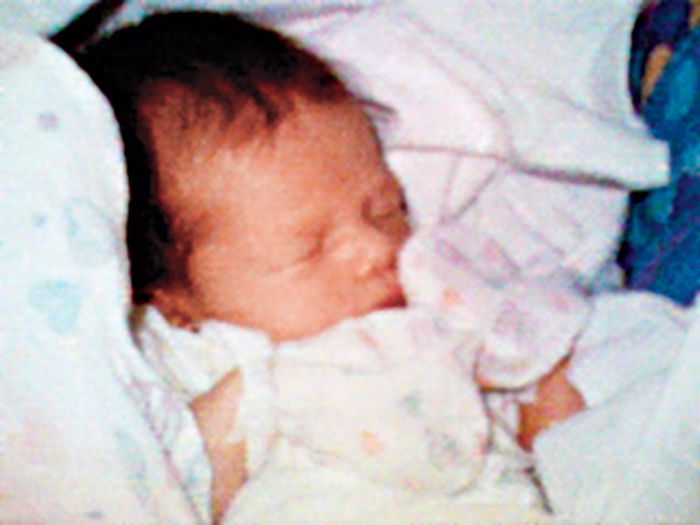
24. Muhammad Ali Knocks Out Sonny Liston – Neil Leifer (1965)
In the history of sports photography, there is no other image more famous than this photo. Every element came together in perfection to create this iconic shot.
The story behind the image is the famous battle between Muhammad Ali and Sonny Liston. People didn’t believe the first fight, as many considered Sonny Liston invincible.
Photographer Neil Leifer was known for taking risks. He was one of only two photographers to use colour film. He managed to capture this image within a split second.
The photographer next to him used black and white. This was one of the reasons Leifer’s image became more popular.
The scene is perfect. You can see the reactions of the crowd, stunned that Ali beat Liston. But also that it happened so fast. The story of David and Goliath played out again.
One other thing that really set the scene was the smokey atmosphere from all the cigars.
Mixed with the photography strobe lights, this gave the scene a blue tint. Below we see the perfect triangular composition, of Ali shouting down at the floored Liston.
You can feel how important it is, even if you don’t follow sports.
![]()
25. The First American Team to Summit Mount Everest – Barry Bishop (1963)
You may think this image is a contemporary photograph. But it is 55 years old. For an adventure photography image, it is one of the world’s most famous.
Everest is one of mankind’s ultimate goals. In 1963, it would have been so much harder to try than today. The clothing, equipment and technological advancements didn’t exist.
When the American team started, they had 900 porters to carry 27 tons of supplies to base camp. In the end, six team members reached the summit with little more than their backpacks.
It was Barry Bishop’s work with a previous expedition and National Geographic that allowed him to join the American Everest Expedition. It was to be the first American ascent.
He was a mountaineer first, and a famous photographer second. The latter being easier to learn. His adventure photography, shown through his famous photos, inspired many to follow in his footsteps.
Not to mention that his images cost him the loss of all his toes and the tip of one finger.
Was it a small price to pay for these images that will last a lifetime?
![]()
26. Sequence of a Race Horse Galloping – Eadweard Muybridge (1878)
Eadweard Muybridge is one photographer who experienced an interesting life.
He wasn’t a wildlife photographer. Instead, he became famous for solving a bet involving Leland Stanford. The latter was the former governor of California, and also a racehorse owner.
The bet was based on whether all four of a racehorse’s hooves are off the ground at the same time. In 1878, Muybridge set up a line of cameras with tripwires.
Each tripwire triggered a photograph for a split second as the horse ran past. The resulting plate shows the 12 images he managed to capture using large glass-plate cameras.
The human eye wasn’t capable of breaking down the quick action of the trot and gallop. In the coming years, he tried to perfect his method of photographing horses in motion.
He copied these images as silhouettes onto a disc, used in the machine he invented. This device was called a ‘Zoopraxiscope’. It would be later regarded as an early movie projector.
They would sit inside the cylindrical device, with the images facing inwards. When spun the viewer would see a small movie if they focused their attention on one spot.
This was one famous photo captured only for the sake of financial gain. Still, it became famous because of the background story.
![]()
27. Family with David Kirby – Therese Frare (1990)
Therese Frare took this picture in 1990. You may think it is older, judging by monochrome film used over colour. The purpose was to cement the idea of the family’s relationship And not get lost in conflicting colours.
The photographer was a student at a time. It isn’t often that a professional photographer, let alone a student, can see such an intimate situation.
You can feel the idea of the family in this image. The father holding his son’s head, the mother comforting the little girl.
The protagonist, David Kirby, was an AIDS activist in the 80s. Here, he lies on his death bed in 1990. This was at a time where homosexuality was illegal.
Kirby tried to change that. He died not long after the image was captured.
Two years later, AIDS was still very much a taboo topic. It was the number one killer of US men aged between 25 and 44 years of age. This is when the image was part of a hard-hitting clothing advertising campaign.
It was United Colors of Benetton who hosted the image. Chosen by the then-creative director at Benetton, Oliviero Toscani.
He saw his role as creating campaigns out of “meaning and issues that advertisers don’t normally want to deal with.” They colourised the image to add more realism.
![]()
28. Case Study House No. 22 – Julius Shulman (1960)
If the American dream is to achieve the highest goals and aspirations, the Californian dream is to own a stucco home on a sliver of paradise.
Julius Shulman helped to change the way Californians live and dream.
In 1960, the photographer headed over to architect Pierre Koenig’s Stahl House. It was a glass-enclosed Hollywood Hills home with a breathtaking view of Los Angeles.
He ended up photographing 36 case studies that looked at an architectural experiment. The purpose? To praise the virtues of modernist theory and industrial materials.
Case Study House No. 22 was the most significant. It is among the most successful real estate images ever taken. Perfect lighting and inspirational staging.
All these elements came together to create incredible product photography. It doesn’t matter if it’s a shoe or a glass box in the sky – everything is a product in its own right.
![]()
29. Light Play – Man Ray (1935)
Man Ray was an American visual artist who spent most of his life in Paris.
He was an outstanding contributor to the Dada and Surrealist movements. He tried many different mediums. He claimed to be a painter above all. But his photography is what made him famous.
He mastered abstract photography, fashion and portrait photography. Man Ray is also famous for his work with photograms. They are called “rayographs” in reference to himself.
Man Ray was one of the first people to explore light painting, and the first artist to do so. Those before him were physiologists or those trying to simplify processes.
Man Ray’s contribution to light painting photography came in his series “Space Writing”. In 1935 Man Ray set up a camera to produce a self-portrait.
He opened the shutter of his camera and used a small penlight to create a series of swirls and lines in the air. What is interesting is that only in 2009 did a photographer realise they were signatures. Crazy.
![]()
30. Eiffel Tower (1887/89)
The Eiffel Tower is among the most iconic landmarks in our world. It’s no surprise that there is an iconic photograph featuring the Iron Lady.
This 18 image series shows the progression of the tower being slowly built over two years.
In architecture photography, this image is among the most famous ones.
![]()
31. Early X-ray Arteriogram of Injected Child – (1899)
This iconic image is almost 120 years old. And it is not a photograph, it is an X-ray.
To create an image, the cadaver of a young boy was injected with four pounds of mercury. Under X-ray, arteries of the limbs, abdomen, heart, neck and face become highlighted.
This important diagnostic technique was later to become known as an arteriogram. You can see the inner workings of where the blood flows within a person.
It wasn’t until many years later that the substances used were safe enough for living subjects. This X-ray took place in 1899 at St. Thomas’ Hospital in London.
This image is as famous as it is important. Photography is a great means of advancing our understanding in many different areas, including science and medicine.
![]()
32. First Aerial Photograph – James Wallace (1860)
Drone photography is one of the largest and fastest-growing areas of photography. Thanks to the invention of drones, we no longer have to use aviation and kites to photograph from above.
158 years ago James Wallace captured this iconic image of Boston. It was only 34 years prior that Joseph Nicéphore Niépce had created the first permanent image.
This may not be the oldest, but it is the oldest surviving aerial photograph ever taken. Gaspard-Félix Tournachon had famously photographed Paris in 1958. But the image is no longer with us.
By incorporating a balloon and a camera, Jame Wallace was able to ascend to 2,000 feet before snapping the ground beneath him.
To get images like these today, you need a special exemption from the FAA. The USA will allow you to go to 1/5th of the height of where this image was taken from.
![]()


